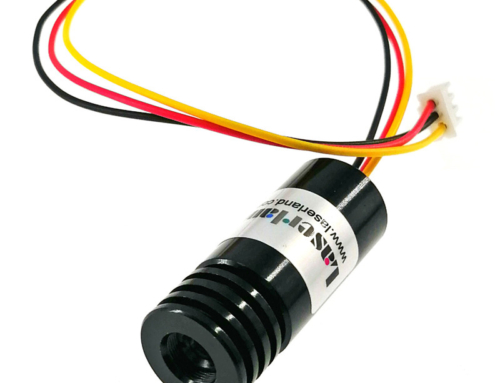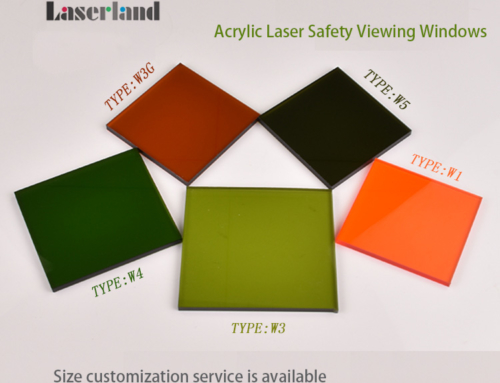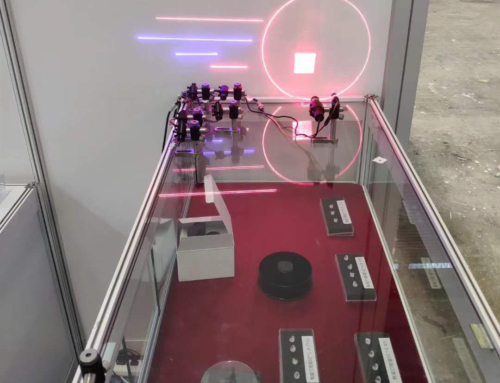Multi-line structured light DOE
At present, there are 10 kinds of multi-line structured light DOE standard products available, and the design wavelengths are 520nm, 635nm, 650nm, 660nm. The specifications of the multi-line structured light DOE are 5 lines, 7 lines, 11 lines, 15 lines, 25 lines, 41 lines, and 65 lines. The maximum XY axis angle is 54.9°×42.6°. The standard structured light DOE is made of plastic, which is generally divided into two types: polymethyl methacrylate (PMMA) or polycarbonate (PC). The standard products are all round in shape, with a diameter of 8 mm and a thickness of 1-1.2mm. They are small and exquisite, which are very convenient for manufacturers to install in laser modules, laser modules or optical components.
Naming Rule of Multiple Line Structured Light DOE:
P(Line)LI-(Wavelength)-(x axis angel)-(y axis angel)
P: Plastic
LI: Line Example:P5LI-635-17-17,5Lines,635nm,x axis angel17°,yaxis angel17° Multiple Line DOE
Grid structured light DOE
Introduction to DOE (Square Grid): Currently, we provide two standard grid structured optical DOE products, with design wavelengths from 658nm and 660nm, respectively. The number specifications of the grids are 10 x 10, 51 x 51, and their corresponding target pattern divergence angles are 40° and 22°, respectively. The structured light DOE is made of plastic, generally divided into polymethyl methacrylate (PMMA) Or two kinds of polycarbonate (PC). The standard products are all round in shape, with a diameter of 8 mm and a thickness of 11.2 mm. They are small and exquisite, which is very convenient for manufacturers to install in laser modules, laser modules or optical components.
Grid Structured DOE Naming Rule:
PSG- (Wavelength)-(Grid number)-(angel)
Example:PSG-658-10-40, 635nm,10×10 grid,Grid Structured DOE of 40.0° divergence angel grid
Line laser DOE Introduction of one-dimensional dot matrix DOE and linear DOE: The output pattern of a one-dimensional dot matrix DOE is a one-dimensional array of dots. At present, there are 6 kinds of one-dimensional lattice structured light DOE standard products available, with design wavelengths from 635nm, 660nm, and 670nm. The specifications of the one-dimensional lattice are 1×5, 1×9, 1×11, 1×19, 1×99. The X axis changes from the smallest 0.9° to the largest 27.7°. The output pattern of the linear DOE is a straight line (line laser), and there are 5 standard products of the linear structured light DOE, and the designed wavelengths are 532nm, 633nm and 660nm. At a working distance of 100mm, the length of the measured straight line ranges from 8.7mm to 83.9mm, and the angle ranges from the smallest 5° to the largest 45.5°. The standard products of one-dimensional dot matrix DOE and linear DOE are made of plastic. There are 2 types of polymethylmethacrylate (PMMA) or polycarbonate (PC). The standard products are all round in shape, with a diameter of 8 mm and a thickness of 1mm-1.2mm. They are small and exquisite, which are very convenient for manufacturers to install in laser modules, laser modules or optical components.
Naming Rule:
One Dimension Dot Lines:
PBS-(wavelength)-1D(beam number)-(x axis angel)
PBS: Plastic Beam Splitter
Example:PBS-635-1D5-6,Wavelength 635nm,1×5 dot-line,x axis 6° angel one dimension dot-line structured light DOE
Lines:
PLI-(wavelength)-(X axis angel)
Example:PLI-633-5,Wavelength 633nm,x axis 5° Line structured light DOE
Two-dimensional lattice structured light DOE
Introduction of two-dimensional lattice structured light DOE:
The output pattern of the two-dimensional dot matrix DOE is composed of multiple laser dots arranged in a square, and the number, size and spacing of the laser dots in each row are equal. At present, there are 13 kinds of standard products of two-dimensional lattice structured light DOE available, and the design wavelengths are divided into 532nm, 633nm and 660nm. The specifications of the two-dimensional lattice are 4×6, 5×5, 10×10, 17×17, 101×101 and other lattices. The minimum angle of the target pattern is 0.43°, and the maximum is 28.2°. The structured light DOE is generally made of plastic. The standard products are all round, with a diameter of 8 mm and a thickness of 1-1.2 mm. They are small and exquisite. It is convenient for manufacturers to install in laser modules, laser modules or optical components.
The naming rules are as follows: Two-dimensional dot matrix structured light DOE Dot Matrix PBS-(wavelength)-2D(number of beams)-(x-axis angle) For example: PBS-635-2D6-7, which is a two-dimensional dot matrix structured light DOE with a wavelength of 635nm, a 6×6 dot matrix, and an x-axis angle of 7 degrees
Cross line structured light DOE
The crosshair DOE is composed of two identical straight lines, arranged vertically and crosswise, just like a “ten” character. At present, there are 15 kinds of cross-line structured light DOE standard products available, the design wavelength is 450nm-645nm, and the X-axis angle (divergence angle) is between 2°-60.3°. At a working distance of 100mm, the X-axis length of the cross-line structured light DOE is measured from 3.4mm to 116.1mm.
The naming rules for crosshair DOE are as follows:
PCR-(wavelength)-(x-axis angle)
For example: PCR-645-2, a cross-hair plastic diffraction element with a wavelength of 645nm and an x-axis angle of 2 degrees
Circular dot matrix structured light DOE
The circular structured light DOE can produce a continuous circular light spot with equal line thickness and uniform energy distribution. We provide three types of DOE standard products of circular structured light, and the design wavelengths are divided into 488nm, 520nm, and 592nm. The maximum X-axis angle of the circular structured light DOE is 42.1°, and the minimum is 3.4°. The circular dot matrix structured light DOE can output a dot matrix arranged in a circle. There are 4 types of circular dot matrix structured light DOE standard products. The design wavelengths are 515nm, 532nm, and 635nm. Customized services are also available. The number of standard points is 16, 36 and 72.
The naming rules for circular DOE and circular dot matrix structured light DOE are as follows: PYQ / PBSC-(wavelength)-(number of beams)-(x-axis angle) PBSC: Plastic Beam Splitter Circles For example: PBSC-515-16-44, a dot matrix with a wavelength of 515nm, a 1×16 circular arrangement, and a circular dot matrix structured light DOE with an x-axis angle of 44 degrees
Special pattern structured light DOE
The special pattern structured light DOE has a variety of pattern shapes, including square, hexagon, scanning frame, alignment frame, concentric circles and other standard products, and the design wavelength is from 532nm to 780nm. The special pattern DOE is designed according to the principle of diffractive optics. Diffractive optics can design unlimited possible output light patterns for specific incident lasers. Therefore, we can also customize patterns with various wavelengths, various patterns and various angles. Welcome consult.
The naming rules for special pattern structured light DOE are as follows:
PDZK/PDK-(wavelength)-(x-axis angle)-(y-axis angle) PDZK: The output pattern is an alignment frame
For example: PDZK-645-16-10, a special patterned structured light DOE with a wavelength of 645nm, an x-axis angle of about 16°, and a height of about 10° Multi-line, grid, random speckle, structured light lens, glass material, diffraction homogenization film
As the demand for structured light in various industries continues to grow, Laserland has independently developed 20 or 30 standard glass material structured light lenses and diffraction homogenizers to meet market needs.
Structured light lenses are characterized by relatively cheap price and short delivery time. The pattern of structured light includes single line, multi-line, grid, cross line, alignment frame and random speckle structured light, as well as keyboard pattern and some customized patterns. Their wavelengths include green light 532nm, red light 650nm, 808nm and 830nm. The size of the lens is generally 3×3 mm, 4×4 mm, 5×6 mm, and other sizes, up to 52×52 mm. To Naming rules for glass structured light lenses: GLI XXX XX XX GLI: domestic linear structured light XXX: laser wavelength XX: angle, unit deg GCR: Cross line structured light GSG: grid structured light GRA: Random lattice structured light GDZK: Alignment frame structured light Single-line, multi-line, grid, random speckle structured light:
Example: Model G3LI-650-67×17, which means 3-line structured light, wavelength 650nm, angle 67°×17°





